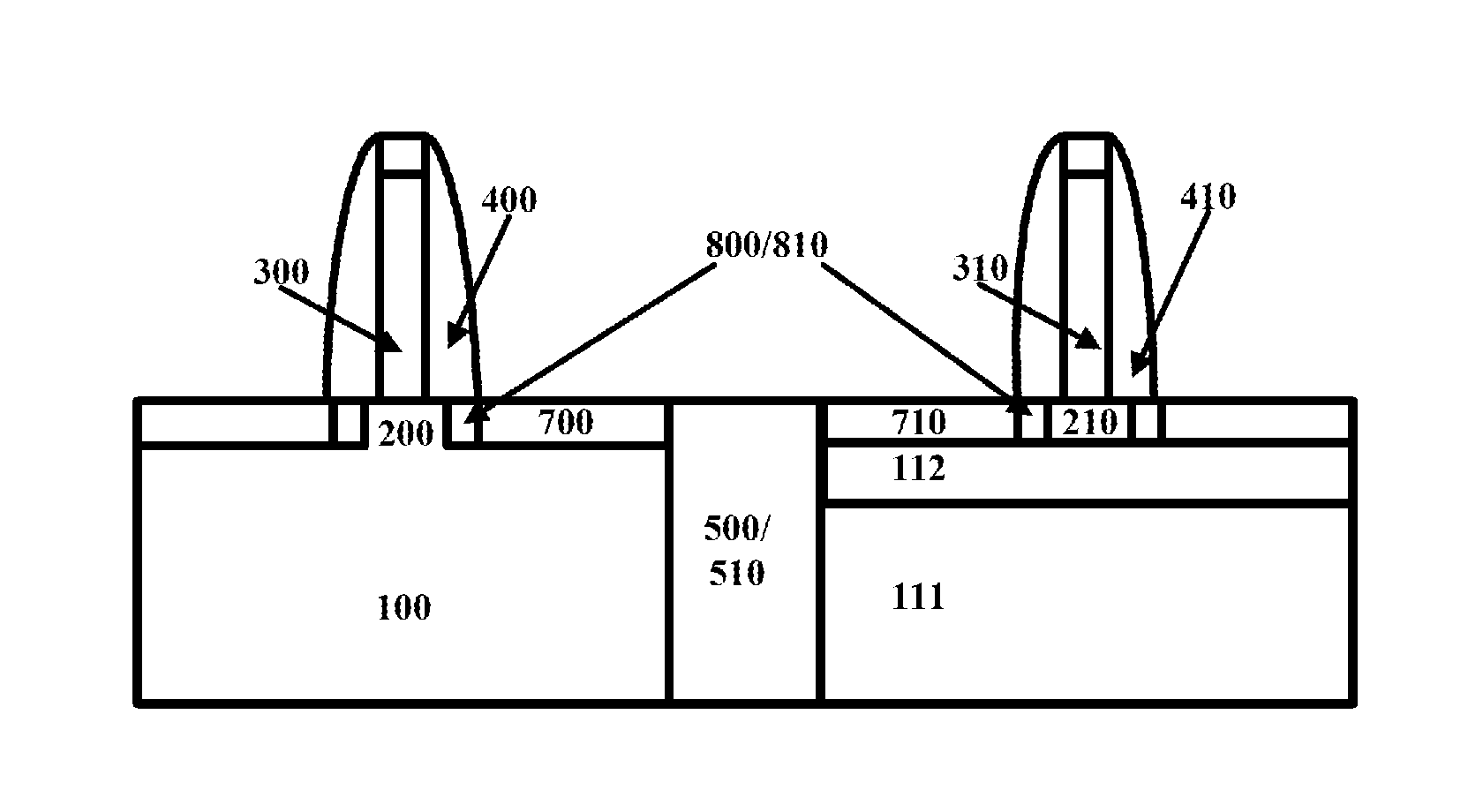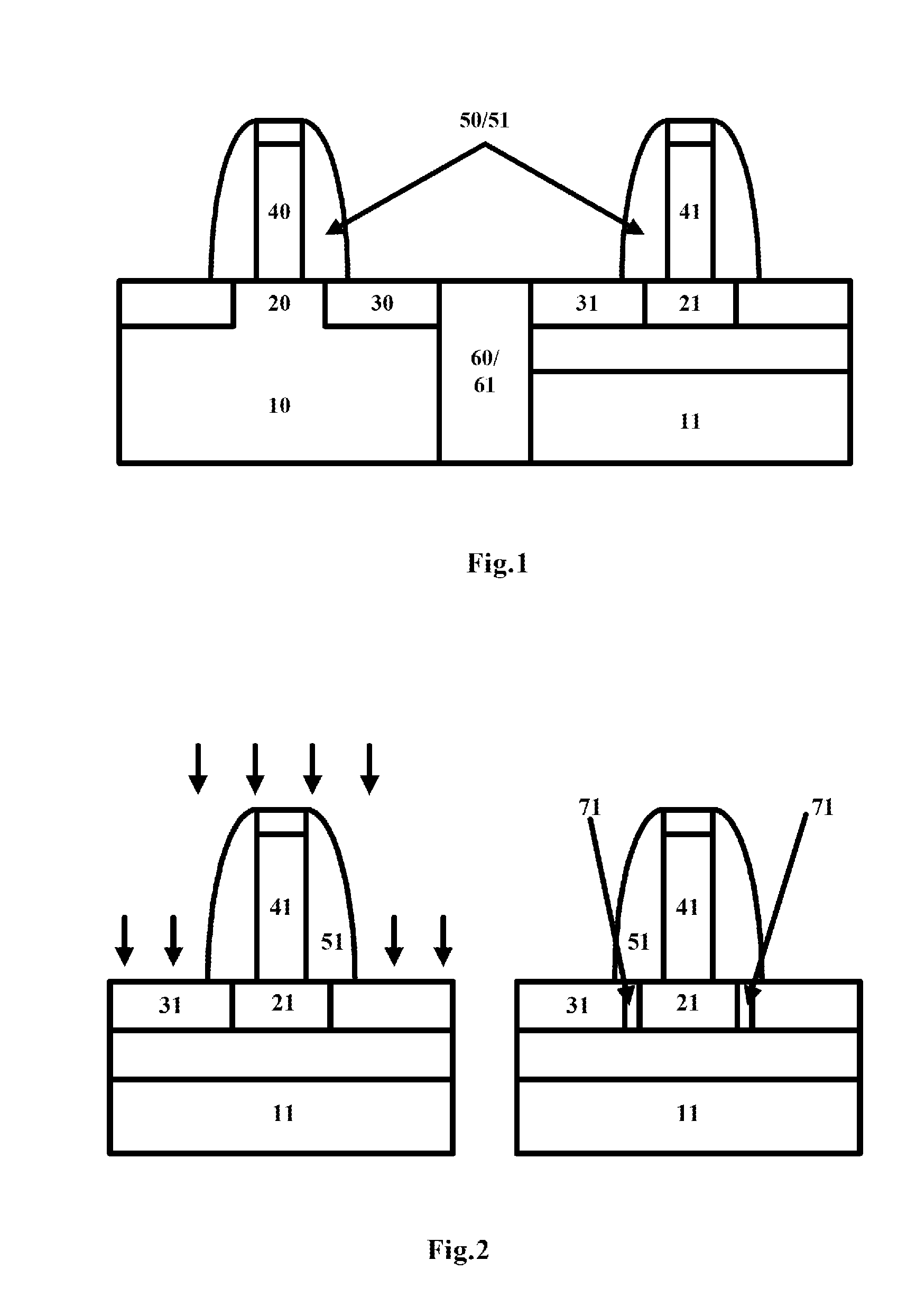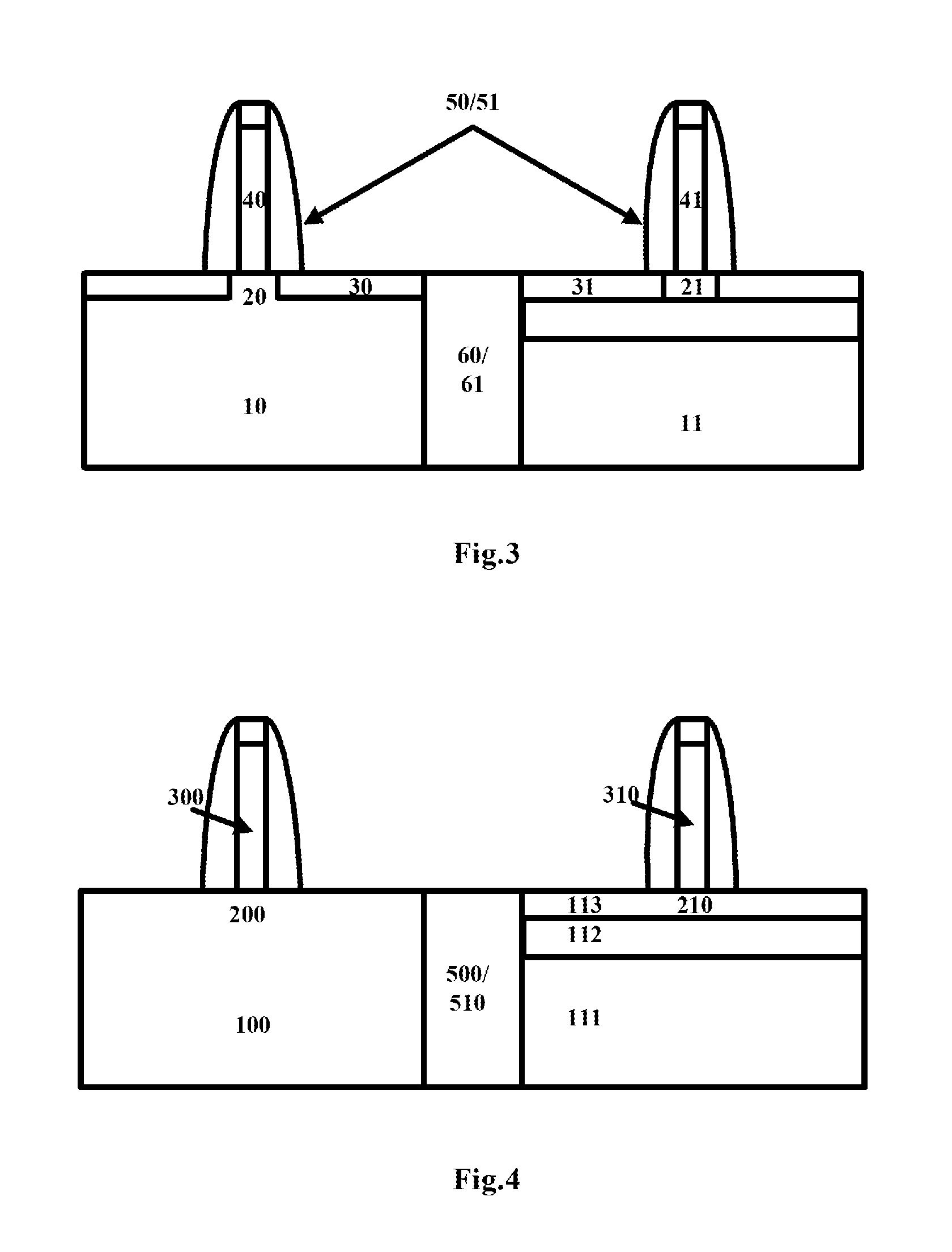Semiconductor device and method of manufacturing the same
a technology of semiconductor devices and semiconductors, applied in the field of semiconductor devices, can solve the problems of deteriorating the performance of proportionally scaled devices, affecting the efficiency of the device, and affecting the performance of the proportionally scaled device, so as to improve the immunity of short channel effects, reduce the schottky barrier height (sbh), and improve the thermal stability
- Summary
- Abstract
- Description
- Claims
- Application Information
AI Technical Summary
Benefits of technology
Problems solved by technology
Method used
Image
Examples
Embodiment Construction
[0033]Hereinafter, features and technical merits of various technical solutions of the present invention will be described in detail with reference to the drawings and in conjunction with illustrative embodiments. The present invention discloses a MOSFET with epitaxially grown ultrathin metal silicide source / drain that shows excellent thermal stability and a method for manufacturing the same. It should be noted that like numerals indicate like structures. In this application, the phrases “first,”“second,”“over,” and “beneath” may be used to modify various device structures. These modifications, otherwise specifically indicated, do not imply the spatial, sequential or hierarchical relationship of the modified device structure.
[0034]FIGS. 4-8 sequentially show cross-sectional views of device structures corresponding to the steps of a method for manufacturing a MOSFET with epitaxially grown ultrathin metal silicide source / drain in sequence. In these figures, the STIs are shown to be di...
PUM
 Login to View More
Login to View More Abstract
Description
Claims
Application Information
 Login to View More
Login to View More - R&D
- Intellectual Property
- Life Sciences
- Materials
- Tech Scout
- Unparalleled Data Quality
- Higher Quality Content
- 60% Fewer Hallucinations
Browse by: Latest US Patents, China's latest patents, Technical Efficacy Thesaurus, Application Domain, Technology Topic, Popular Technical Reports.
© 2025 PatSnap. All rights reserved.Legal|Privacy policy|Modern Slavery Act Transparency Statement|Sitemap|About US| Contact US: help@patsnap.com



